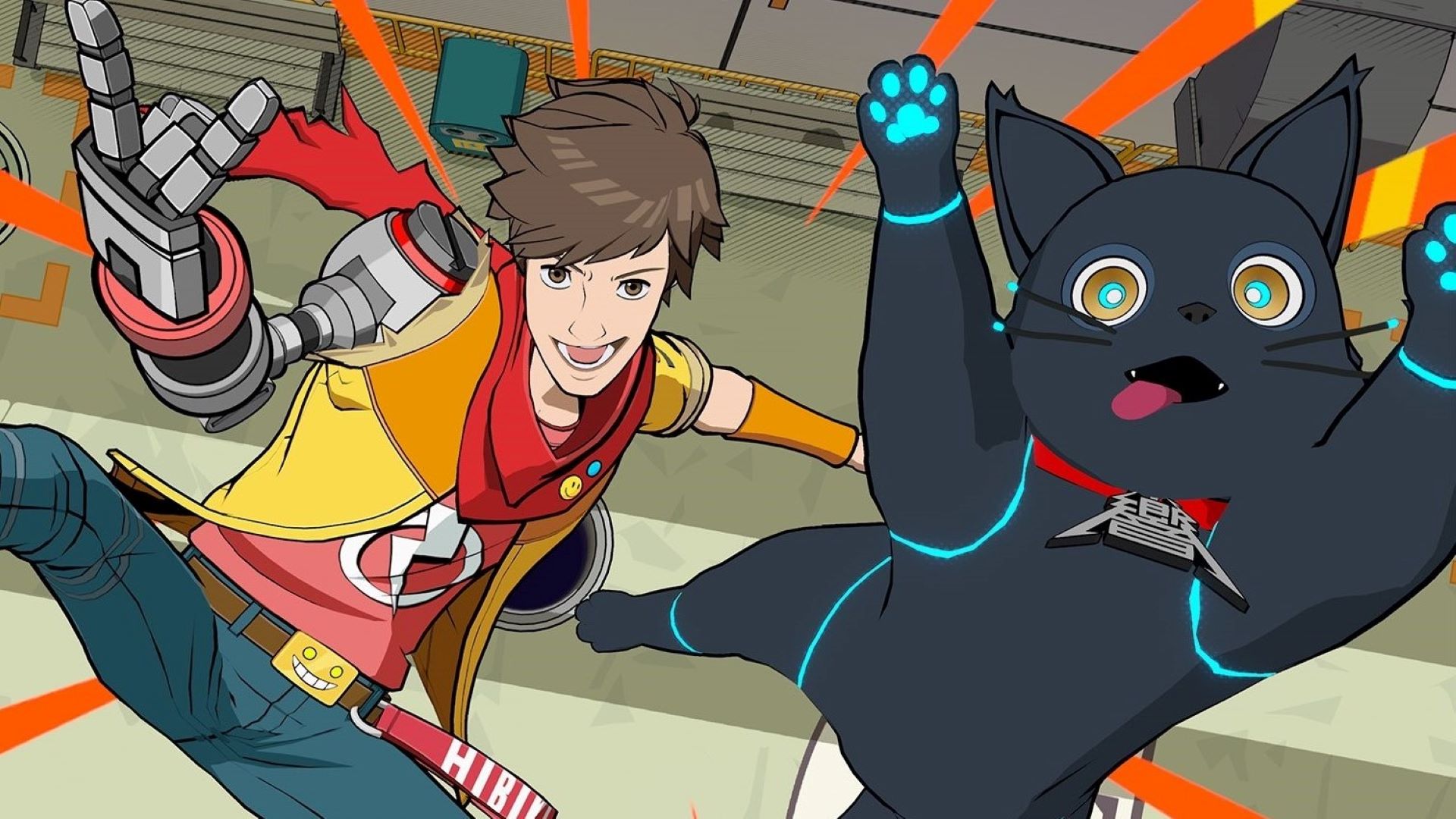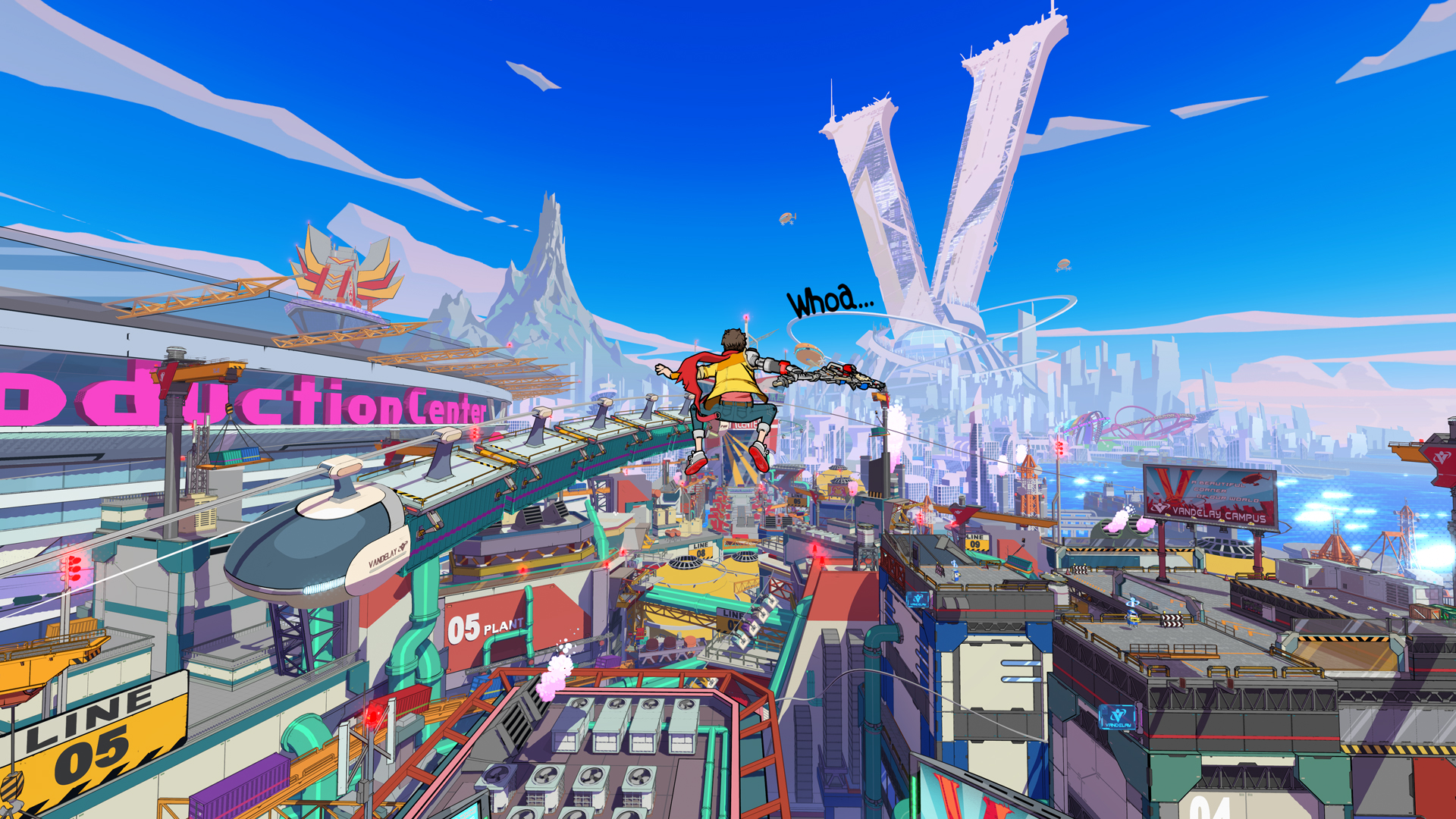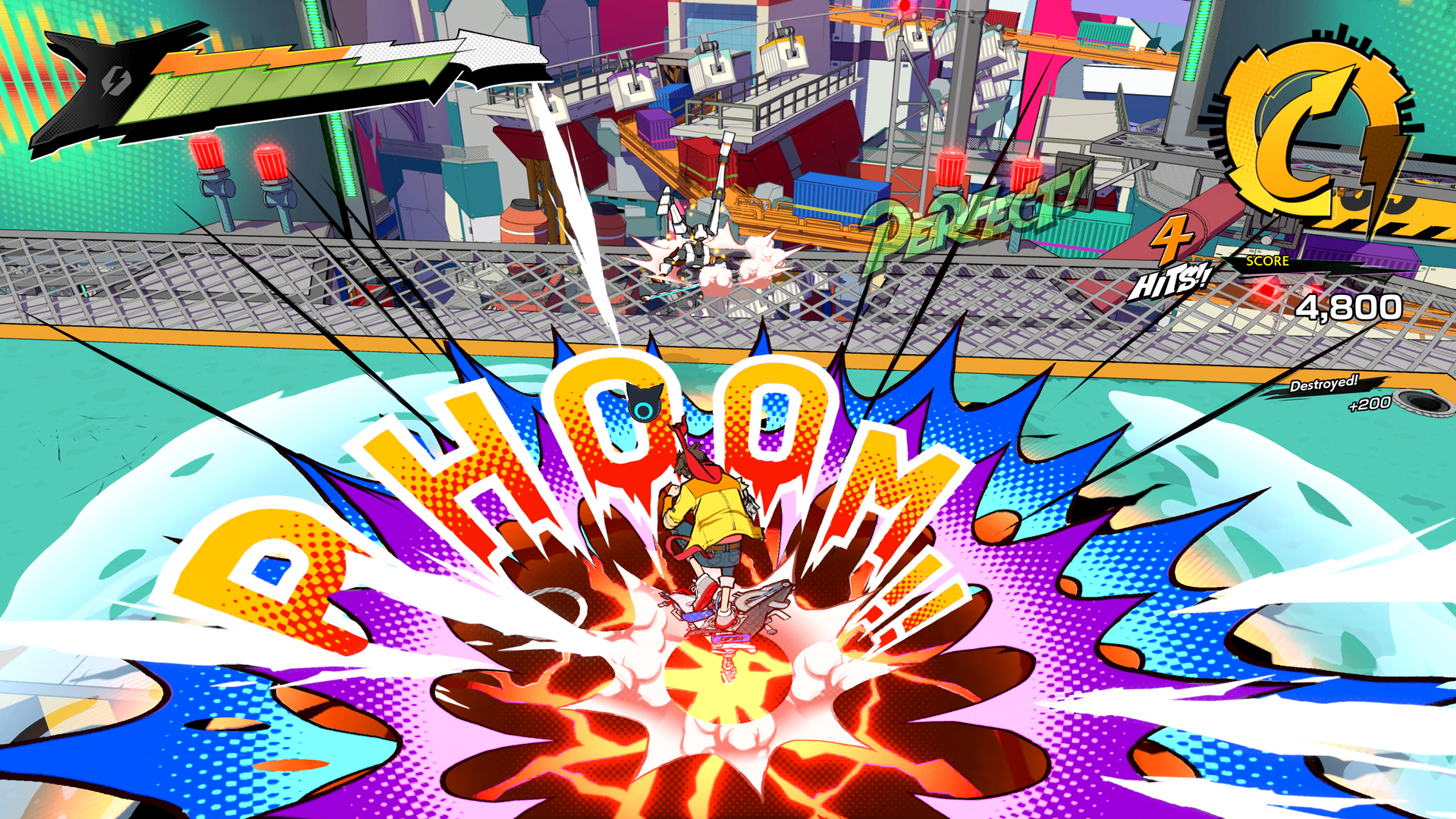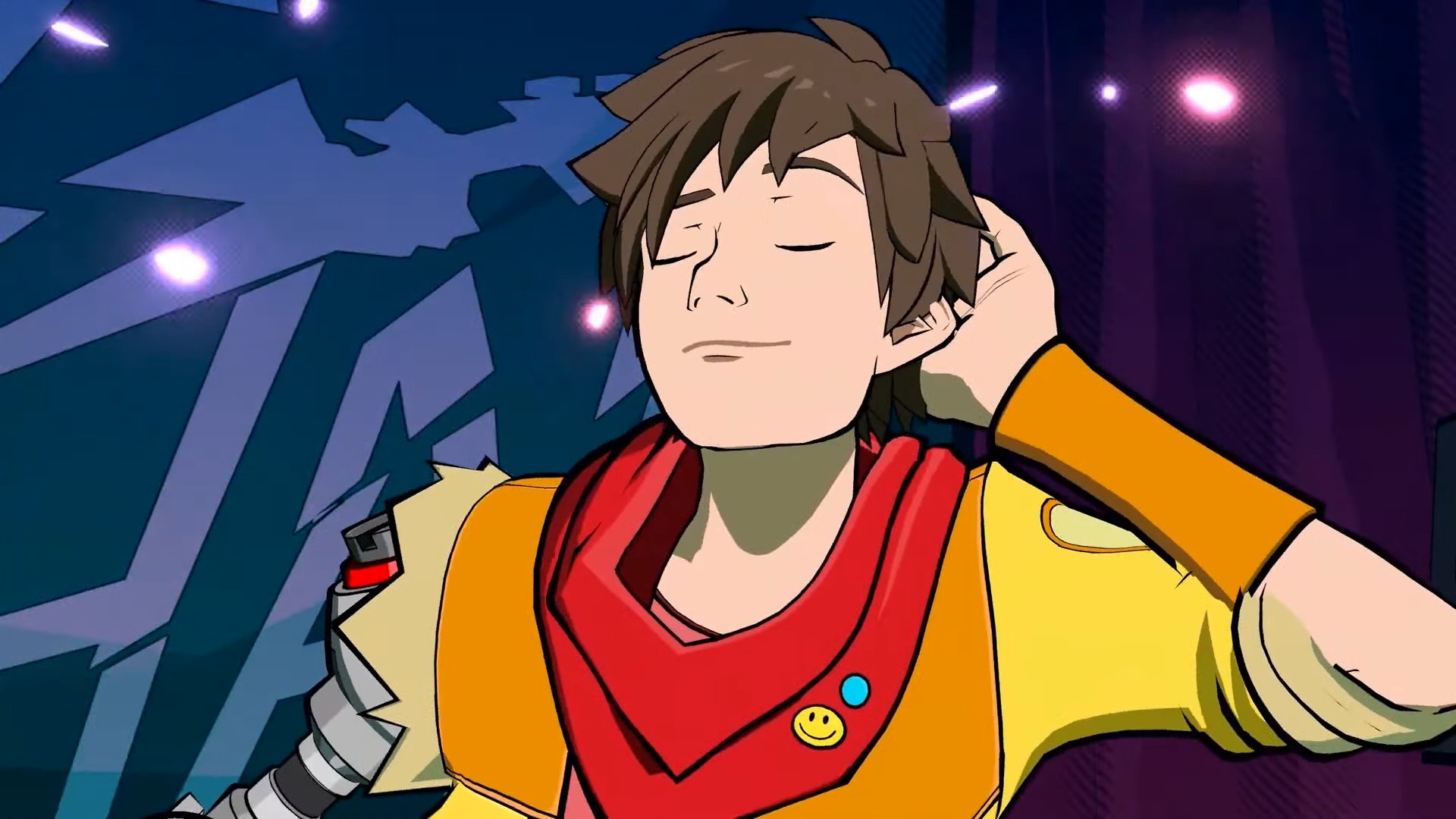How Hi-Fi Rush came together to deliver "kinetic action comedy" inspired by Edgar Wright and Shaun of the Dead
Interview | Edge explores the story behind Tango's surprising smash

The rhythms of the triple-A videogame hype cycle are now so firmly established that anything that disrupts them is bound to stand out. But even if not for the remarkable nature of its arrival - revealed and launched at January 2023's Xbox Developer Direct - Hi-Fi Rush would surely have made a splash. Here was a game that applied blockbuster production values to something other than photorealism; a character-action game that was also a rhythm-action game; and a Tango Gameworks release that seemed a world apart from the most famous works of its soon-to-be-former CEO, Shinji Mikami.
But then Hi-Fi Rush was born from a desire to do something different. Very different. John Johanas had graduated from designer on 2014's The Evil Within to director on its sequel, having also helmed the first game's two downloadable expansions. By the end of 2017, in other words, he'd just come off four horror projects in a row – and the prospect of another, in the form of the in-development Ghostwire: Tokyo, was not wildly appealing.
Fortunately, his mentor had already asked him for new ideas, and invited him to pitch them internally. "For a long time, I'd had this idea for a musical action game in my mind," Johanas recalls. Mikami hadn't specifically requested something outside the horror genre, but Johanas decided it was time for a change. He presented a pitch which, he notes, is remarkably close to the finished product: "A game where everything syncs to the music. It's colourful, it's funny, it's over the top. And it's just, like, a fun action game." Johanas was not confident that his idea would be accepted.
"The first thing I said was, 'This is probably not going to make it past this table. But if I have one shot to do this, I'm gonna do it now'." Since it was so different to anything the studio had made before, there was a collective understanding that this would be a hard sell. What worked in Johanas's favour was that he had a clear idea of how the game would play. But there was one lingering question: "Will this actually work?"
"Kinetic action comedy"


This feature first appeared in Edge Magazine. For more features, interviews, and reviews, and more delivered to your doorstep or digital device, subscribe to Edge.
And so Johanas and lead programmer Yuji Nakamura, with a little outside assistance from the studio's sound and VFX teams, spent just under a year finding out. They built a prototype focused exclusively on the combat mechanics, to prove out the concept of fighting in time to a soundtrack. "It didn't even have any graphics - it was all greyboxed," Johanas remembers. Graphics or no, it got positive feedback within Tango, and was duly passed on to Bethesda in the hope that the publisher might be interested in pursuing the idea further.
What happened next was unexpected: the prototype began circulating internally at Bethesda, like a secret being passed on via word of mouth. Since the text was in English and the prototype wasn't labelled, no one at the publisher knew that Tango was behind it. Its distinctiveness was key, Johanas explains. "Probably the reason why we were able to make it was because people at Bethesda were excited about doing something new and different. And it was already fun, which was the big one."
Johanas's vision can be distilled into three words: "kinetic action comedy". That, he says, was primarily inspired by the film of Edgar Wright. "They're fast-paced, the conversations are very quick, and they feel fun, which is the most important thing." A particular inspiration was the scene in Shaun Of The Dead where the title character and his friends fight zombies in their local pub to the strains of Queen's Don't Stop Me Now - yet, as the game progressed, it drew comparisons to another of Wright's films.
Weekly digests, tales from the communities you love, and more
"This was before Baby Driver came out, remember?" Johanas laughs, recalling how that film's action set-pieces are cut to match the rhythm of its various needle drops. "Everyone was like, 'Oh, you just watched Baby Driver and thought of this'."He pulls a face. "But it was great, because it helped us sell the idea even better. Because if you can make a full movie like this..."
Of course, making a game in which the action syncs to the beat is very different from making a film that does likewise, with one extra chaotic element in the mix: the player. Hi-Fi Rush's approach to the rhythmic part of the equation is more carrot than stick – you are rewarded for attacking, jumping and dodging to the beat rather than punished for whiffing your timing.
That was partly informed by working with Nakamura, Johanas says: his programmer "didn't know music", and so his own suggestions, rooted in music theory, had to be adapted to make it work. Watching live concerts proved key, he recalls. "It's like, what does anyone do when they see a band? If the band is clapping, everyone claps along. But more complex stuff, like triplets or dotted quarter notes [one and a half beats], that's difficult."
As for the music itself, audio director Shuichi Kobori explains via Johanas, pulling double duty as translator: "The initial pitch was that it would have a rock-type feel, so that's where we went with the soundtrack. The direction [I was given] was not to go too electronic-sounding, and just pay tribute to this rock feel." It was easier, he says, to emphasise that once the graphics came in.
Stylish moves

In defining the look of the game, Johanas reaches for another three-word descriptor: "colourful, sharp and clean" (like"kinetic action comedy", even the phrases used to pin down the game's direction have a certain rhythm). He wanted a "nostalgic" look that nodded back to the PS2 and Dreamcast era - "just games that looked fun." There was no one specific piece of art that inspired the game's cartoonish visual design, art director Keita Sakai elaborates, again through Johanas: "It was like there was this general idea of making something that's visually unique and impressive, but also kind of nostalgic for that sort of era that we talked about."
We don't need a translator to understand the words 'Jet Set Radio' as Sakai speaks, but as Johanas details his full response, that's just an example of "games that did a lot with less – that didn't use [detailed] texture work and looked sharp and clean and simple." Johanas's pitch for the game's aesthetic was, to his mind, straightforward. "It should feel either like you asked a Japanese team to draw an American comic book or you asked an American team to draw a Japanese anime - something in between that’s not quite either." He smiles. "It made sense to me."
Was it, then, a conscious decision to reflect the makeup of the studio: an American director working with a Japanese team?" The only thing I specifically said was, 'Let's not just make it look like it's from Japan'. We didn't want people to look and be like, 'Oh, that's just another anime game'." Johanas knew the artists had nailed the brief when he saw people playing Hi-Fi Rush, he explains with a laugh: "People were reacting like, 'Japanese people made this game?'"
This stylised approach proved perfectly suited to the game's environment - because it's not only the player and action that are infused with music here. Every city has its own rhythm, as they say, and Hi-Fi Rush's spaces feel like the ultimate manifestation of that idea, the whole place vibrating to the beat of Kobori's score. "We asked ourselves: 'How can we take this world that we designed and [make sure] it moves to the rhythm?'" Sakai explains.

"From then, we would look at every piece – the design was already exaggerated a bit, but then it was all about: how can we move it so it doesn't feel unnatural? That was partially why we had a lot of machinery, because there's a natural rhythm to it."
Keita Sakai, art director
The pace was set by the first area. "It's very mechanical - you've got these green pipes, and we played with the idea of this cartoonish distortion, like they’re pulsing out,” Sakai continues. "From then, we would look at every piece – the design was already exaggerated a bit, but then it was all about: how can we move it so it doesn't feel unnatural? That was partially why we had a lot of machinery, because there's a natural rhythm to it. Then we kind of spread that out to the other levels. And over time the team organically figured out: OK, that should move, and that should move."
Making everything move was one thing. Making it seamless – to allow gameplay to flow into cinematics and back again without delays or hitches – was quite another. From the start, Johanas was insistent on one thing: the music couldn't stop. Even as the game segues between platforming sections, climactic battles (which Johanas likens to “the chorus”) and dialogue scenes, it could never break the rhythm – even skipping a cutscene requires waiting for the next measure, to ensure the game can seamlessly transition to the next scene. "The whole thing should feel just like a song," Johanas says.
As you might imagine, all this presented a stiff challenge behind the scenes. After a lengthy response from Kobori, Johanas begins his translation by saying, "The last thing he said is, he wound up hating me by the end of it," to much laughter from his colleagues. "A good example of [avoiding cuts]," Kobori's more expansive explanation begins, "is if we're in a song with lyrics, we don't want to cut or jump forward while the lyrics are still playing."
One example he gives is the way a boss's health bar is gated, depending on how much of the song remains. "So you can't forcefully make the song sound terrible. And in the same way, if we had some sort of stage gimmick and we needed to stretch it out depending on when the player activated it, we would theoretically have to make multiple routes or multiple animations that would take different lengths of times, that would always sync up depending on when the player performed an action." Johanas gives us a look as if to say, 'No wonder they hated me'. "It was a huge amount of time and effort for no one to notice what we did, basically."
Shadow drop

If at times Hi-Fi Rush works its musical magic by avoiding drawing attention to itself, though, the opposite is true of its show-stopping needle drops. Boss battles and other major set-pieces are soundtracked by the likes of Nine Inch Nails,The Joy Formidable and, perhaps most memorably of all, The Prodigy’s Invaders Must Die. "We liked the idea that there'd be these climactic moments in the game - just like in a movie, when sometimes a song kicks in and you're like, 'Oh, yeah, that feels awesome'," Johanas says. Licensing brought its own share of headaches, he adds, though all of the songs in the game were on his longlist, and in most cases Tango was able to secure his first choice.
Once the soundtrack was firmed up, though, designing sequences to match demanded almost the exact opposite approach to the rest of the game. "For unlicensed tracks, the idea was that you're the lead player in a song – like, you're playing the lead guitar part. So there's this background track almost, and you’re adding that layer on top," Johanas says. But with a licenced track, it was essentially about paying tribute to the original. "We had everyone listen to the song [and then ask], 'Visuals-wise, what do you think matches with it? If it's a boss fight, say, can you use that riff as the enemy's attack?' So we reverse-engineered [the design] from the song. It was two completely different ways of making it."
Talking of completely different ways of doing things brings us back to that release strategy, which was by no means as spontaneous as the launch itself. “We were always consciously thinking about the messaging," Johanas says. "We didn't want people to be upset that it wasn't an Evil Within game." Internally there was concern, too, that because Tango hadn't made a game like it before, the reaction might be negative.

A decision was made to tease it at E3 2020. But when that event was cancelled, the can was kicked farther down the road. Likewise when Microsoft purchased Bethesda. "We were looking at times to announce it so we wouldn't get overshadowed by something. We wanted to hype it but not get people too excited, or give too much of a chance to jump on it. And then that period just got shorter and shorter."
When the Developer Direct came around, the idea of a shadow drop was mooted - an almost unheard-of suggestion for a game that had been in development for five years. "We were freaking out," Johanas admits. "'Is this gonna work?' You know - what if something happens that day? But I think it went as well as anyone could imagine." In hindsight, however, does he wonder how the game might have been received without the surprise release? "I mean, I was glad that people were enjoying it, you know? But it makes you think, could it have been different if we announced it earlier? I guess we'll never know."
The surprises weren't over for Tango, either, with Mikami announcing his departure from the studio he had founded 13 years prior. Johanas speaks warmly about his mentor (see Q&A) even as he acknowledges that Hi-Fi Rush was his attempt to both pay tribute to Mikami and step out of his shadow somewhat. "Making this game was sort of my way of saying, 'OK, this is my spin on things that you've taught me. It's not a copy of what you were doing'. It's like, I want to take the things I've seen you do, what we've talked about, and I want to say, 'Well, here's how I would do it’. So it's different, but I like to think that there’s some sort of that DNA - the learnings of the past being passed down."
If you can detect traces of the master's fingerprints in Hi-Fi Rush, then, they're faint ones. Certainly, we say to Johanas, it feels very much its own thing: his name might appear in the credits, but it's demonstrably not A Shinji Mikami Game. "Which is weird," he says with a smile, "because you go online and see reviews, and it's like: 'Shinji Mikami does it again!'"
This feature first appeared in issue 391 of Edge Magazine. For more in-depth interviews, features, reviews, and more, subscribe to Edge or pick up a single issue.

Chris is Edge's former deputy editor, having previously spent a decade as a freelance critic. With more than 15 years' experience in print and online journalism, he has contributed features, interviews, reviews and more to the likes of PC Gamer, GamesRadar and The Guardian. He is Total Film’s resident game critic, and has a keen interest in cinema. Three (relatively) recent favourites: Hyper Light Drifter, Tetris Effect, Return Of The Obra Dinn.


